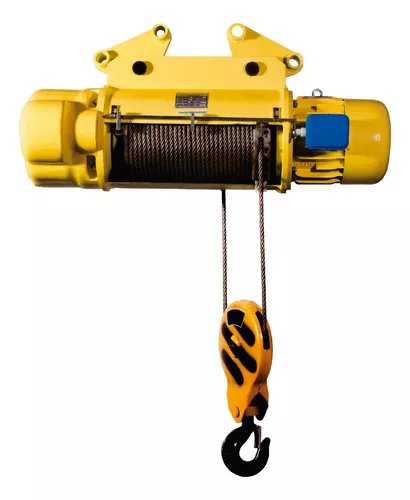The Benefits of Integrated Pneumatic Systems
Integrated pneumatic systems offer significant benefits across various industries, combining air pressure with mechanical components to perform a wide range of tasks. These systems harness compressed air to power tools, automate processes, and drive machinery, making them highly versatile in their applications. The integration of pneumatics into modern systems is often found in industries such as manufacturing, construction, transportation, and even healthcare, where precision and reliability are key. One of the primary advantages of integrated pneumatic systems is their efficiency. Pneumatic systems can operate with minimal energy consumption while providing high output force. They convert compressed air into mechanical motion, which can be used for tasks like lifting, pushing, or rotating. Since air is abundant and easily accessible, pneumatic systems are also cost-effective compared to other power sources, such as hydraulics or electrical systems. In environments where energy conservation is crucial, the energy efficiency of pneumatic systems makes them a preferred choice for both large-scale industrial setups and smaller applications.
The components in these systems cylinders, valves, actuators, and compressors are typically easier to maintain and less prone to breakdowns than more complex electrical or hydraulic systems. This simplicity extends to the overall system design, reducing the time and expertise needed for installation and maintenance. Pneumatic systems are generally less sensitive to environmental conditions such as moisture or temperature changes, which makes them particularly well-suited for harsh environments like manufacturing floors or outdoor construction sites. In terms of safety, pneumatic systems offer a higher degree of protection compared to their hydraulic or electrical counterparts. Because they use air as a working medium, there is no risk of oil leaks, which are common in hydraulic systems and can cause both safety hazards and environmental concerns. Additionally, the pressure levels in pneumatic cylinders manufacturer systems can be carefully regulated, reducing the risk of over-pressurization and potential accidents. This makes them ideal for applications where safety is paramount, such as in medical devices, automotive manufacturing, or food processing.
Pneumatic systems are also highly scalable, allowing for easy adaptation to different operational needs. Whether the task requires micro-precision or heavy-duty power, pneumatic systems can be configured to meet the requirements. For instance, they can be integrated with automated control systems to perform complex, multi-step tasks in an industrial setting, or they can be used in simpler, manual operations. This scalability makes them attractive for both high-volume production lines and custom, small-scale projects. Furthermore, advancements in technology have improved the integration of pneumatig systems with other systems such as robotics, data analytics, and Internet of Things IoT platforms. Modern pneumatic systems can now be monitored and controlled remotely, allowing for predictive maintenance, real-time adjustments, and enhanced efficiency. This level of integration ensures that companies can reduce downtime and improve the overall performance of their operations, ultimately contributing to greater productivity. In summary, integrated pneumatic systems provide a host of benefits, including energy efficiency, simplicity, safety, and scalability.





 Moreover, online communities provide resources that enhance spiritual growth.
Moreover, online communities provide resources that enhance spiritual growth.  Consumers are becoming more knowledgeable about the different cannabinoids and terpenes found in cannabis, fostering discussions around the effects and benefits of each compound. This cultural shift encourages users to engage in more mindful consumption, where they consider the therapeutic potential of cannabis beyond its psychoactive properties. As social stigmas around cannabis continue to diminish, the exploration of THCA flower exemplifies a progressive attitude towards cannabis use—one that celebrates its complexity and versatility. In conclusion, THCA flower is carving out its niche within modern cannabis culture, serving as a testament to the evolving understanding of cannabis and its myriad compounds. With its potential health benefits, diverse cultivation practices, and alignment with the holistic health movement, THCA flower is not only enriching the cannabis experience but also empowering consumers to make informed choices. As research continues to unfold, the role of THCA in cannabis culture is poised to expand, inviting a new wave of curiosity and appreciation for this remarkable plant and its many constituents.
Consumers are becoming more knowledgeable about the different cannabinoids and terpenes found in cannabis, fostering discussions around the effects and benefits of each compound. This cultural shift encourages users to engage in more mindful consumption, where they consider the therapeutic potential of cannabis beyond its psychoactive properties. As social stigmas around cannabis continue to diminish, the exploration of THCA flower exemplifies a progressive attitude towards cannabis use—one that celebrates its complexity and versatility. In conclusion, THCA flower is carving out its niche within modern cannabis culture, serving as a testament to the evolving understanding of cannabis and its myriad compounds. With its potential health benefits, diverse cultivation practices, and alignment with the holistic health movement, THCA flower is not only enriching the cannabis experience but also empowering consumers to make informed choices. As research continues to unfold, the role of THCA in cannabis culture is poised to expand, inviting a new wave of curiosity and appreciation for this remarkable plant and its many constituents.
 Another common approach is to use the Windows Recovery Environment WinRE. If your system fails to start multiple times, it may automatically enter WinRE. From here, you can access troubleshooting tools like Startup Repair, which can automatically fix some startup problems. Alternatively, you can choose to restore your system to a previous restore point if you have enabled System Restore. This option can revert your system settings and installed software to a time before the issue began, potentially resolving the startup error. If you suspect that hardware changes or installations might be causing the issue, removing any recently added hardware can help. This includes peripherals like printers, external drives, or any internal components. Once removed, try booting your system again. Additionally, if you have installed any new software or drivers, uninstalling them while in Safe Mode can eliminate conflicts that may be causing startup problems. In cases where the startup errors are linked to corrupted system files, using the System File Checker SFC tool can be beneficial.
Another common approach is to use the Windows Recovery Environment WinRE. If your system fails to start multiple times, it may automatically enter WinRE. From here, you can access troubleshooting tools like Startup Repair, which can automatically fix some startup problems. Alternatively, you can choose to restore your system to a previous restore point if you have enabled System Restore. This option can revert your system settings and installed software to a time before the issue began, potentially resolving the startup error. If you suspect that hardware changes or installations might be causing the issue, removing any recently added hardware can help. This includes peripherals like printers, external drives, or any internal components. Once removed, try booting your system again. Additionally, if you have installed any new software or drivers, uninstalling them while in Safe Mode can eliminate conflicts that may be causing startup problems. In cases where the startup errors are linked to corrupted system files, using the System File Checker SFC tool can be beneficial.